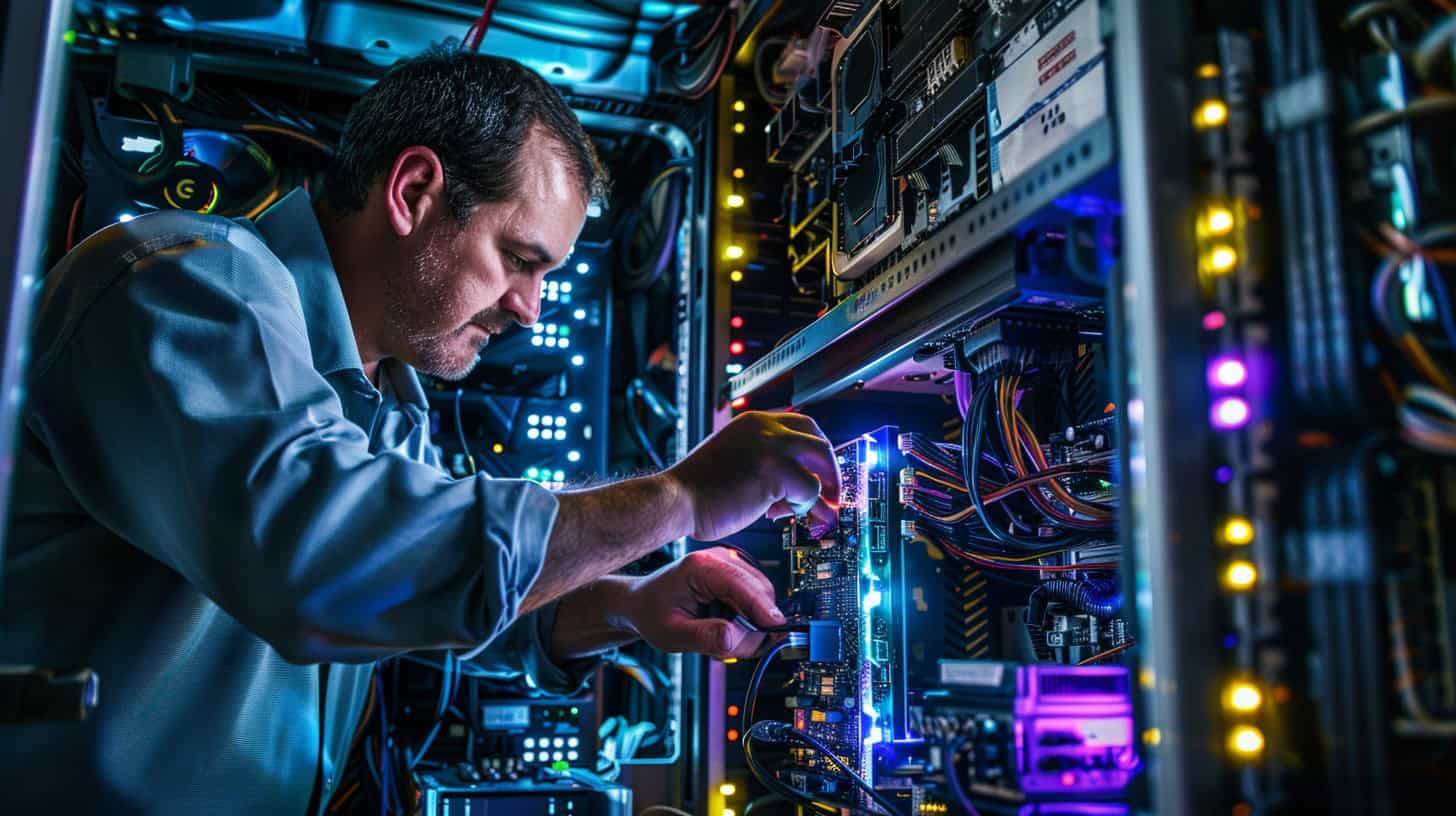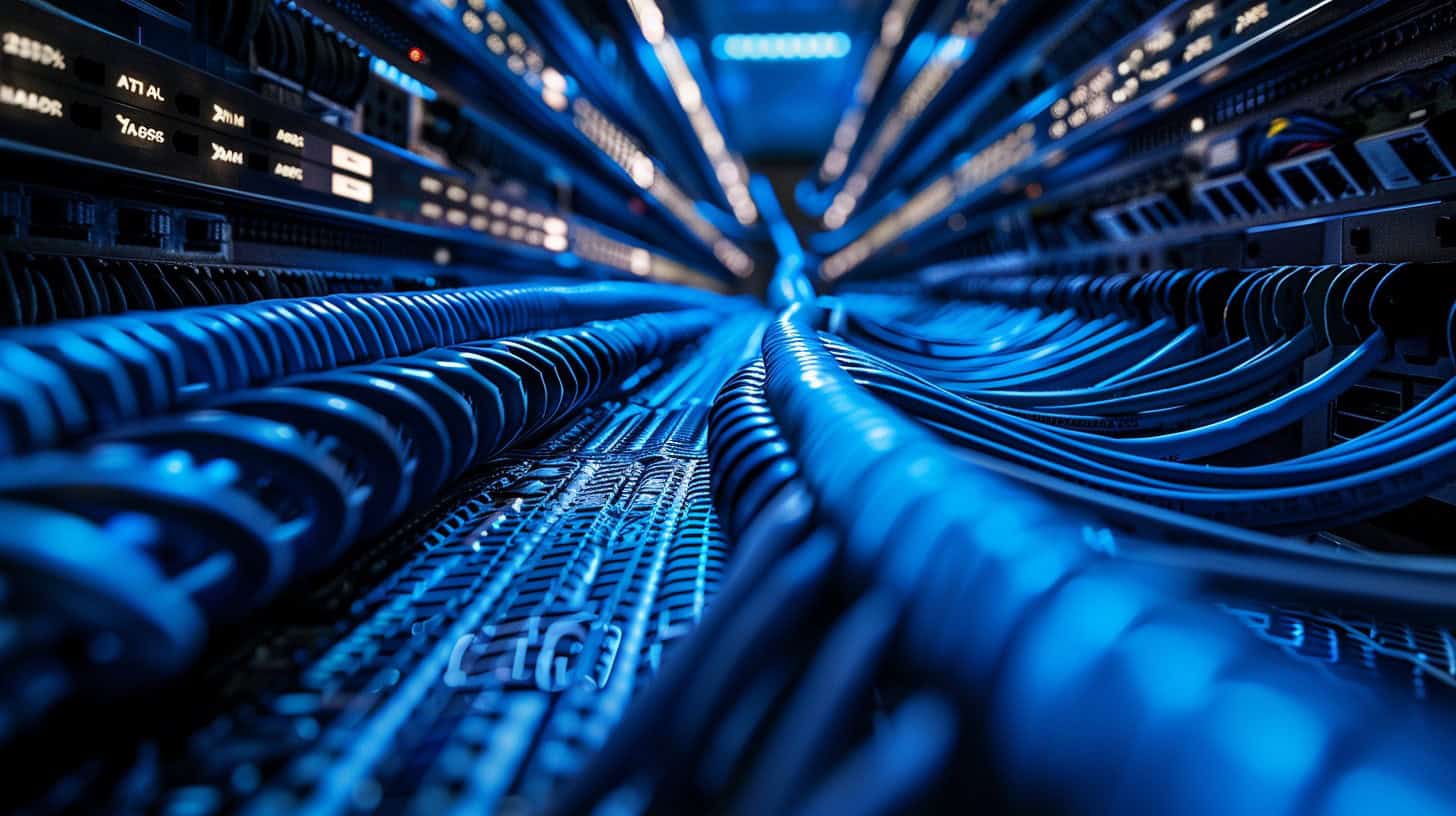Feeling like your computer’s always lagging or at risk of cyberattacks? Computer systems servicing can tackle these issues. By maintaining and repairing devices, we boost performance and security.
This blog will guide you on how to achieve this… Read on!
Key Takeaways
Computer systems servicing involves maintaining and repairing computers to enhance performance and security. This includes fixing hardware issues like broken screens and addressing software problems such as viruses.
Regular services, including preventive maintenance, data backups, and software updates, help protect against cyber threats like hackers and phishing attacks.
Upgrading both hardware (like increasing RAM) and software ensures your devices run faster and more efficiently while reducing errors.
Routine tasks such as cleaning dust from hardware components with compressed air contribute significantly to system speed by preventing overheating.
Categories of computer systems services include preventive maintenance, troubleshooting, system installation/upgrades, customization for user needs, and disaster recovery plans for data protection.
Table of Contents
Defining Computer Systems Servicing

Computer Systems Servicing (CSS) means keeping computers and smart devices in top shape. It includes installing, troubleshooting, repairing, and maintaining all types of digital devices.
CSS specialists make sure systems run smoothly by addressing both hardware issues like broken screens or faulty motherboards and software problems such as viruses or slow performance.
CSS covers everything from preventive maintenance to data backup. This helps prevent data loss and boost computer performance. For example, regular virus scans catch harmful software before it can do damage.
Hardware upgrades improve speed and efficiency, while security patches protect against new cyber threats. Online casino operators rely on these services to keep their systems secure and efficient at all times.
Value of Computer Systems Servicing

Proper computer systems servicing makes sure your data stays safe from hackers. It also keeps your computers running fast and smoothly, reducing errors and downtime.
Boost Security Measures
Boost security by identifying problems early. Use anti-malware and antivirus programs to detect threats like viruses or spyware. Routine malware scans can keep your operating system clean.
Prevent breaches by protecting sensitive information with data backups and firewalls.
Prevent cyber-attacks with regular software updates. Patching vulnerabilities reduces risk from hackers and phishing attacks. Employ two-factor authentication for enhanced security on laptops, desktops, and even Apple devices like iPhones or Mac computers.
Cybersecurity specialists recommend virtual private networks (VPNs) to secure personal data during online activities.
Increase System Efficiency
Clean your computer’s hardware to boost system speed. Dust and debris slow down fans, causing the processor to overheat. You can use compressed air for this task.
Upgrading software is essential. Ensure you always have the latest version of your operating system and applications. This keeps performance up and bugs minimal.
“Upgrading hardware also helps,” says a well-known system administrator. For example, increasing RAM improves multitasking on a laptop computer significantly.
Routine maintenance, like defragmenting hard drives and optimizing software settings, can enhance efficiency further. Always aim for best practices in computing to keep everything running smoothly.
To keep mass-assembled personal computers performing their best, customizing each unit during assembly plays a major role…
Next: Discover different categories of computer systems services that offer these solutions.
Categories of Computer Systems Services

Computer systems servicing keeps your devices running smoothly. It includes various tasks, each critical for system performance.
- Preventive Maintenance:
- Regular checks catch problems early.
- Clean hardware to avoid dust build-up.
- Update software to fix bugs and prevent crashes.
- Troubleshooting:
- Identify the root cause of issues quickly.
- Apply bug fixes for smooth operation.
- Resolve software errors that slow down systems.
- System Installation and Upgrades:
- Install new operating systems efficiently.
- Upgrade existing systems to improve features.
- Ensure compatibility with all hardware components.
- Customization of Computer Systems:
- Tailor settings for end-users’ needs.
- Enhance user interface for better usability.
- Improve layout to boost productivity and interaction.
- Disaster Recovery:
- Create backup plans for data storage.
- Implement protocols for quick recovery after failures.
- Secure data against unauthorized distribution and cyber threats.
- Utilize email archiving to ensure critical communications are securely stored and can be quickly retrieved during recovery efforts after a system failure or cyberattack.

These services ensure reliable, secure, and efficient computer operations… Keep devices functioning optimally…
People Also Ask
What is computer systems servicing?
Computer systems servicing involves repairing computers, optimizing software, and boosting security.
How does it help with cybersecurity threats?
It detects malware, updates security software, and prevents cybercrime like phishing emails.
Can it improve web design jobs?
Yes! It helps web designers by ensuring reliable user interactions and secure network infrastructure.
Is data science part of computer systems servicing?
Definitely! Data scientists analyze data to enhance system efficiency and detect vulnerabilities.
What skills are needed for this job?
You need problem-solving abilities, knowledge of programming languages, and experience in machine learning.
Are there online education resources available for learning these skills?
Absolutely! Platforms like YouTube offer courses on topics from endpoint security to cloud services optimization.


